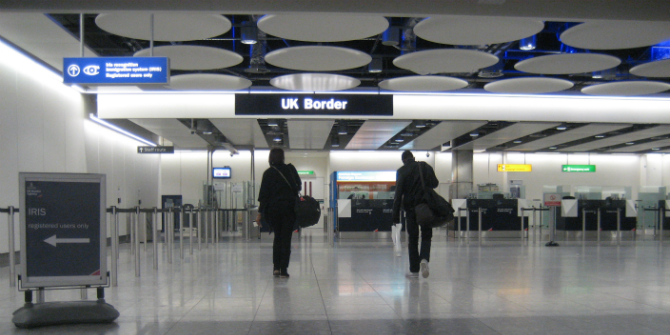 Our regular columnist Matthew Goodwin explores some key divergences in polling surveys that suggest we don’t really know the balance of public opinion on remaining or leaving the EU. He also looks at other polling-related developments and insights.
Our regular columnist Matthew Goodwin explores some key divergences in polling surveys that suggest we don’t really know the balance of public opinion on remaining or leaving the EU. He also looks at other polling-related developments and insights.
In the Poll of Polls, the race remains close: Remain 51%, Leave 49%.
There has been much discussion about the polls and how things are going. In a new podcast, John Curtice points out that whereas the race appears to be very close and to have tightened there are two telephone polls by Ipsos-MORI and ComRes that paint a different picture. These polls so far always put Remain on 60% and Leave on 40%. Curtice argues:
It raises a question as to whether or not these differences that we see in the polls are not just random variation but depend on how the survey was conducted. It also suggests that, actually, we might not be sure how close this race is. On face value it looks close and tight but look under the bonnet then we are not sure exactly how close it is.
He elaborates here. With this in mind it is also worth reading another analysis of the polls, which suggests that Remain could be as much as 10 points ahead of Leave, despite a recent tightening.
What is driving the Leave vote? Workshops at Chatham House and NIESR brought together various people to share research on the underlying drivers. This included the release of a new briefing paper, which reveals differences between Inners and Outers and identifies the strongest drivers of the Leave vote. The paper, by Goodwin and Milazzo, reveals the centrality of concerns over immigration and its perceived effects to the Leave vote.
Those who feel most negatively towards immigration – who simultaneously feel that migration is having negative effects on Britain’s economy, culture and welfare state – have nearly a 50% likelihood of being an Outer. In contrast, those who hold more positive attitudes toward immigration – who simultaneously feel that migration is good for Britain’s economy and culture and is not a burden on the welfare state – have only an 11 per cent likelihood of voting to leave the EU.
Other research on Inners and Outers points to the fact that while there is no clear gender gap there are clear and consistent social class, education and party divides in the vote. As Curtice summarised it:
The referendum is exposing a divide between a younger, educationally well qualified Britain and an older, less educationally accomplished one, a gap between those who are educationally and culturally comfortable with immigration and global capitalism and those who are not.

Research from James Morris (slides here) indicates that around 13 per cent of the electorate could be considered ‘swing voters’ who the campaigns could push in one or the other direction. These voters tend to be younger, Conservative-leaning, distributed fairly evenly across the social classes and are currently leaning toward Remain. They also appear especially responsive to non-political figures, notably the money-saving expert Martin Lewis.
What difference could Cameron’s renegotiation make? An interesting online experiment by YouGov probes how the vote might shift according to the renegotiation outcome. The results suggest that the vote is highly volatile but also that the content and framing of the renegotiation could be highly influential. Initially, without any prompt, they found a 41-41 division in the ‘Remain’ or ‘Leave’ votes. When a sample of voters were told that Cameron had delivered major change to Britain’s EU relationship ‘Remain’ surged to 50% and Leave slumped to 23%.
But that is not where the story ends. When voters were instead told that Cameron had delivered small change, ‘Remain’ was on 37% and ‘Leave’ 38%. And when the sample were told that the PH had achieved no change ‘Remain’ was 32% and ‘Leave’ 46%. This implies that how the renegotiation is framed could make all the difference.
Once again, the survey confirmed that the area that voters most want to see reformed is immigration. By some margin the most popular reforms desired by voters were greater control of borders and immigration from the EU, and limiting benefits for EU migrants. This could be problematic for Cameron given recent news such as this.
Other recent evidence-based blogs
- Alisdair Young considers UK trade and the implications of a possible Brexit
- Simon Hix discusses how Britons lack knowledge about the EU
- YouGov explores public attitudes toward free movement
- Jo Hunt considers some problems in David Cameron’s letter
- Kenneth Armstrong discusses ever closer union
This blog represents the views of the author and not those of the BrexitVote blog, nor the LSE.
Matthew Goodwin is Professor of Politics in the School of Politics and International Relations at the University of Kent, and Associate Fellow at Chatham House. He is also a senior fellow at the UK in a Changing Europe project. His most recent book is the co-authored Revolt on the Right: Explaining Support for the Radical Right in Britain (2014). Matthew tweets at @GoodwinMJ.






